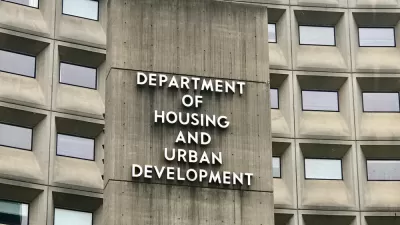The island nation's housing market faces a discrepancy between existing stock and rapidly changing demographics.

A Brookings Institution report by Jiro Yoshida on Japan's rental housing market reveals "a mismatch between housing stock and demographics in a rapidly aging and shrinking society, exemplified by vacant housing units." The country's unique geography and post-war economy have created a market "characterized by a large construction volume, rapid technological progress, fast depreciation of housing value, a thin secondary market, and low maintenance of existing properties."
The combination of scarce habitable land, "frequent and significant earthquakes," and "a rapid change in housing stock, demographics, and lifestyle after WWII" led to a "significant housing shortage in urban areas, especially during the 1950s and 1960s, alleviated in part by active public sector investments," Yoshida writes. "After the housing shortage was resolved, the government enacted the Basic Act for Housing in 2006 by focusing on housing quality issues such as elderly persons’ housing, low carbon emissions, and condominium management."
Other takeaways:
-
"In 2020, approximately 60% of Japan’s newly constructed units were owner-occupied houses and condominiums, and the remaining 40% were rental units," but "rental units account for only 19% of the total floor area."
-
"Young households tend to live in private rental housing. Among heads of households younger than 30 years old, 82% live in private rental housing, and only 9% own houses."
"The biggest challenge," says Yoshida, "is managing the housing stock in an aging and shrinking society."
FULL STORY: Land scarcity, high construction volume, and distinctive leases characterize Japan’s rental housing markets

Study: Maui’s Plan to Convert Vacation Rentals to Long-Term Housing Could Cause Nearly $1 Billion Economic Loss
The plan would reduce visitor accommodation by 25,% resulting in 1,900 jobs lost.

North Texas Transit Leaders Tout Benefits of TOD for Growing Region
At a summit focused on transit-oriented development, policymakers discussed how North Texas’ expanded light rail system can serve as a tool for economic growth.

Why Should We Subsidize Public Transportation?
Many public transit agencies face financial stress due to rising costs, declining fare revenue, and declining subsidies. Transit advocates must provide a strong business case for increasing public transit funding.

A Visual Celebration of Manhattan’s Chinatown Elder Community, Through Food
Lanterns, cafeteria trays, and community connection take center stage in this stunning photo essay.

How to Make US Trains Faster
Changes to boarding platforms and a switch to electric trains could improve U.S. passenger rail service without the added cost of high-speed rail.

Columbia’s Revitalized ‘Loop’ Is a Hub for Local Entrepreneurs
A focus on small businesses is helping a commercial corridor in Columbia, Missouri thrive.
Urban Design for Planners 1: Software Tools
This six-course series explores essential urban design concepts using open source software and equips planners with the tools they need to participate fully in the urban design process.
Planning for Universal Design
Learn the tools for implementing Universal Design in planning regulations.
City of Santa Clarita
Ascent Environmental
Institute for Housing and Urban Development Studies (IHS)
City of Grandview
Harvard GSD Executive Education
Toledo-Lucas County Plan Commissions
Salt Lake City
NYU Wagner Graduate School of Public Service





























